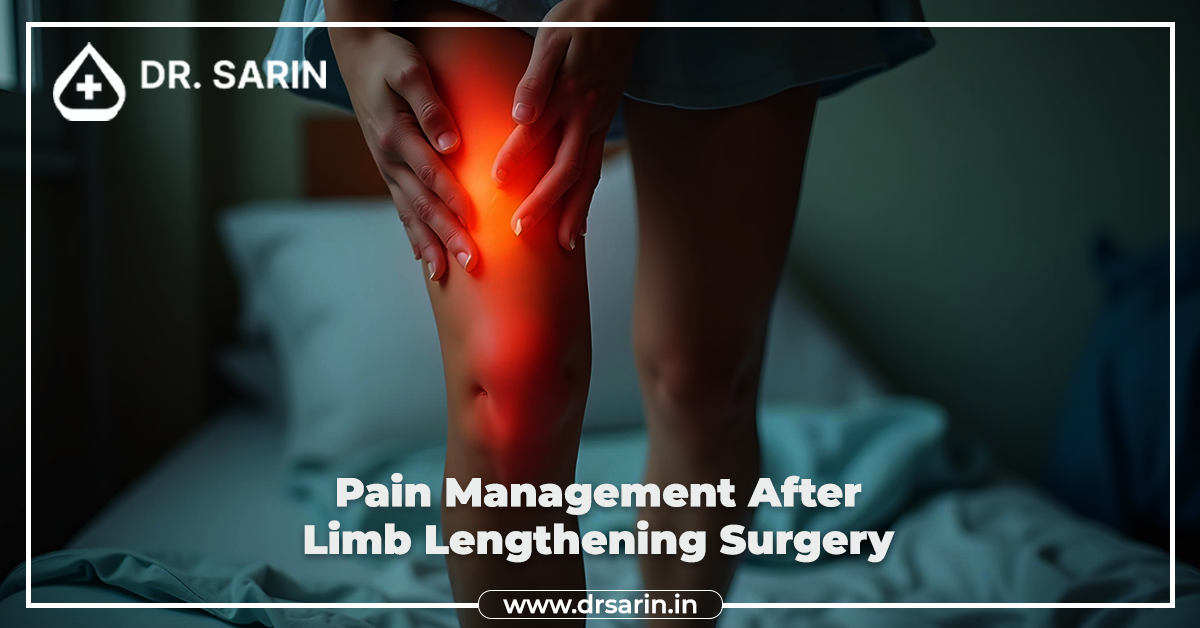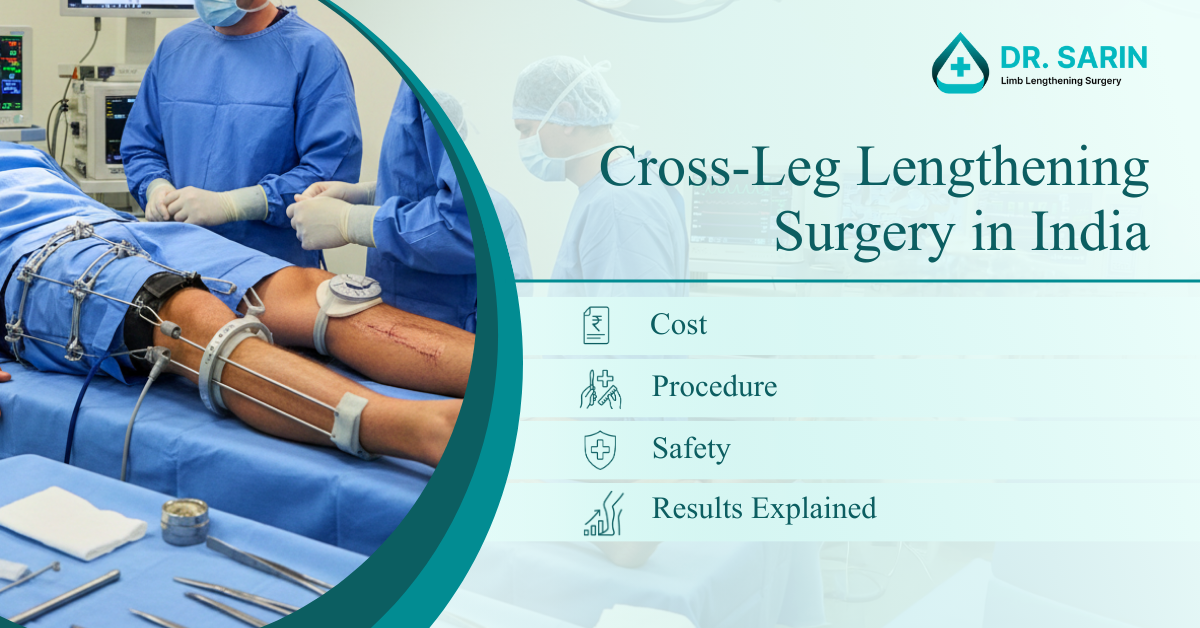Limb lengthening surgery is a life-changing procedure that can dramatically improve physical appearance, posture, self-esteem, and even mobility in some cases. However, like any major orthopedic intervention, it comes with its own set of challenges—pain management being one of the most crucial aspects of recovery.
As a limb lengthening specialist in India, I, Dr. Amar Sarin, understand how important it is to educate patients not just about the surgery, but about what happens afterward. Managing pain effectively not only improves the overall experience but also promotes faster recovery and better outcomes.
Why Does Pain Occur After Limb Lengthening Surgery?
Limb lengthening involves a controlled and gradual process of bone separation and new bone formation, also known as distraction osteogenesis. During this time:
- Bones are slowly pulled apart
- Muscles, nerves, tendons, and soft tissues stretch along with the bone
- The body works to heal and generate new tissue
These processes can naturally cause discomfort, tightness, and pain, especially during the distraction and early consolidation phases. However, with the right strategies, pain can be kept within manageable limits.
My Approach to Pain Management
Every patient experiences pain differently, so I focus on creating a personalized pain management plan for each individual. Here’s how we manage post-operative pain step-by-step:
1. Pre-Surgery Counseling and Planning
Pain management begins before the surgery. I ensure that all my patients are:
- Mentally prepared for what to expect
- Educated on pain scales and how to communicate discomfort
- Introduced to our pain management team who will support them throughout recovery
2. Medications for Pain Relief
We use a multi-modal approach to minimize reliance on any one medication. This includes:
- NSAIDs (Non-Steroidal Anti-Inflammatory Drugs): Help reduce inflammation and mild to moderate pain.
- Opioids (used cautiously): Reserved for short-term, severe pain during the early recovery phase.
- Neuropathic Pain Agents: For nerve-related discomfort that may arise during limb stretching.
- Muscle Relaxants: To reduce spasms and tension during physiotherapy.
We adjust medication doses based on the patient’s age, pain threshold, and progress.
3. Physical Therapy and Stretching
Pain often increases when movement decreases. That’s why physiotherapy is vital. It:
- Improves flexibility and range of motion
- Reduces stiffness and muscle tension
- Prevents contractures and joint issues
I work closely with trained physiotherapists who guide gentle exercises tailored to each recovery stage. Movement may feel uncomfortable at first, but over time, it actually reduces pain and accelerates healing.
4. Distraction Schedule and Rate Control
One of the most important aspects of pain management is controlling the distraction rate—the speed at which the bones are being lengthened.
- If the bone is lengthened too quickly, pain increases and complications may arise.
- I monitor X-rays and pain feedback closely to adjust the distraction rate safely, ensuring progress without triggering unnecessary discomfort.
5. Non-Medical Pain Relief Techniques
Complementary therapies often help patients cope better. These include:
- Cold packs to reduce swelling and numb the area
- Heat therapy to relax tight muscles
- Guided meditation and breathing techniques
- Distraction methods such as music, reading, or light entertainment
- Support groups or one-on-one sessions with previous patients to boost emotional strength
Pain is not just physical—it’s also emotional. We treat the whole person, not just the symptoms.
6. Emotional and Psychological Support
Living through limb lengthening is a journey of endurance. Anxiety, frustration, and emotional fatigue can amplify physical pain.
That’s why I always encourage:
- Open communication between patient, family, and the medical team
- Regular check-ins with a mental health counselor
- Creating a realistic recovery timeline to set proper expectations
When patients feel emotionally supported, their ability to manage pain increases significantly.
7. Transition to Home-Based Recovery
Once patients are discharged, they’re provided with:
- A detailed medication and physiotherapy plan
- 24/7 support via call or consultation for any flare-ups
- Regular virtual check-ups or in-clinic visits
- Guidance on daily activity, diet, and sleep to naturally support healing
Final Thoughts from Dr. Amar Sarin
Pain after limb lengthening surgery is real, but it is also manageable. With a well-structured plan, emotional support, and consistent follow-up, most patients find that their pain becomes less intense over time—and completely worth the transformation they achieve.
If you or your loved one is considering limb lengthening surgery, know that you will never walk the road alone. My team and I are here to guide you through every step of the journey, helping you rise stronger, taller, and pain-free.
Need Help or Have Questions?
Schedule a consultation, and let’s discuss how we can make your transformation smooth and supported—with expert care and a personalized pain management plan.
You May Also Like to Know:



